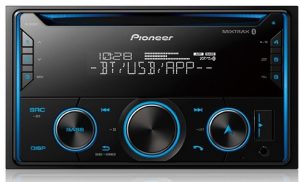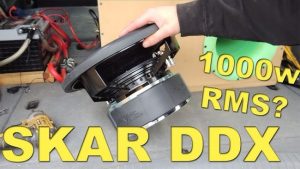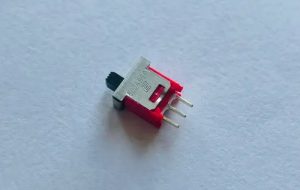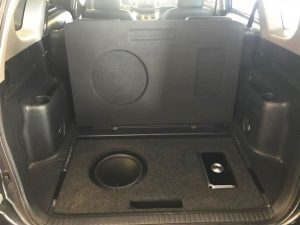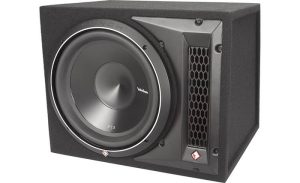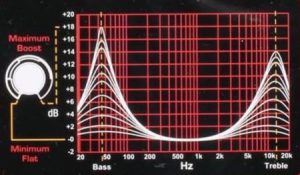Are you planning to upgrade your car’s audio system but feel confused about stereo sizes? You’re not alone. The terms “Single DIN” and “Double DIN” often puzzle car owners looking to replace their factory stereos. This guide breaks down everything you need to know about these car stereo sizes, helping you make an informed decision for your vehicle.
Contents
- What Are Single DIN and Double DIN?
- Physical Differences Between Single DIN and Double DIN
- Feature Differences and Capabilities
- Which Vehicles Use Which Size?
- How to Determine Your Vehicle’s DIN Size
- Adapter Options and Conversion Possibilities
- Pros and Cons Analysis
- Price Comparison: What You Can Expect to Pay
- Installation Considerations
- Popular Brands and Models in 2025
- Which Format Is Right for You?
- Future Trends in Car Stereo Technology
- Conclusion: Making Your Decision
What Are Single DIN and Double DIN?
DIN stands for “Deutsches Institut für Normung,” a German standards organization that created the original specifications for car stereo sizes. Today, these standards are used globally in the automotive industry.
Single DIN Defined
A Single DIN stereo has specific dimensions: 2 inches (50mm) in height and 7 inches (180mm) in width. The depth can vary, but typically ranges between 4 and 7 inches. This compact size was the industry standard for decades and remains common in many vehicles today.
Double DIN Explained
Double DIN stereos maintain the same width as Single DIN units (7 inches/180mm) but double the height to 4 inches (100mm). This larger face area allows manufacturers to include bigger screens and extra features that wouldn’t fit on a Single DIN faceplate.
Physical Differences Between Single DIN and Double DIN
The most obvious difference between these two formats is their size, but let’s explore how this affects their appearance and functionality.
Size Comparison
When placed side by side, a Double DIN unit looks exactly like two Single DIN units stacked on top of each other. This extra vertical space transforms what’s possible in a car stereo.
Faceplate Design
- Single DIN faceplates are typically dominated by essential controls, with limited space for displays. Many feature small LCD screens or single-line displays.
- Double DIN faceplates provide enough room for touchscreens ranging from 6.2 to 10 inches diagonally, creating space for more intuitive interfaces and visual features.
Installation Considerations
The mounting brackets and installation kits differ between these two formats. While both use standard mounting holes along the sides, the dash opening requirements vary significantly. Many modern vehicles can accommodate either size with the appropriate mounting kit, though some compact cars only have space for Single DIN units.
Feature Differences and Capabilities
The size difference between these stereo formats directly impacts what features manufacturers can include.
Single DIN Features
Despite their smaller size, modern Single DIN stereos pack impressive functionality:
- Basic audio controls (volume, bass, treble)
- AM/FM radio reception
- CD/DVD playback (on models with disc slots)
- Bluetooth connectivity for calls and music streaming
- USB and auxiliary inputs
- Satellite radio compatibility
- Smartphone integration (limited compared to Double DIN)
Some Single DIN units feature flip-out or motorized screens that extend from the unit when in use, offering touchscreen benefits in a Single DIN slot. These are called “flip-out” or “mechless” receivers.
Double DIN Advantages
The larger face area of Double DIN stereos enables advanced features:
- Large touchscreen displays (usually 6.2-10 inches)
- Built-in navigation systems with detailed maps
- Backup camera integration
- Apple CarPlay and Android Auto with full-screen interfaces
- DVD playback with video display
- Multiple camera inputs (rear view, dash cam, etc.)
- Split-screen functionality
- Climate control integration in some vehicle models
- Multi-zone audio control
Audio Quality Comparison
It’s important to note that size doesn’t necessarily determine sound quality. Both Single and Double DIN units can deliver excellent audio, depending on:
- The quality of the internal digital-to-analog converter (DAC)
- Power output (measured in watts per channel)
- Pre-amp voltage outputs
- Built-in equalizer capabilities
- Signal processing features
High-end Single DIN units often prioritize superior audio components over screen size and can outperform budget Double DIN stereos in sound reproduction.
Which Vehicles Use Which Size?
Car manufacturers design dashboard openings based on interior space and aesthetic choices. Here’s how the formats typically break down across vehicle types:
Vehicles Commonly Using Single DIN
- Older vehicles (pre-2000s)
- Compact cars with limited dashboard space
- Sports cars with performance-focused dashboards
- Some European luxury vehicles
- Motorcycles with stereo options
- Boats and marine applications
Vehicles Commonly Using Double DIN
- Modern midsize and large sedans
- SUVs and crossovers
- Minivans and family vehicles
- Newer trucks and commercial vehicles
- Most Japanese and American vehicles manufactured after 2010
Many newer vehicles integrate the stereo so deeply with other dashboard functions (climate control, vehicle settings) that aftermarket replacement becomes complex regardless of DIN size.
How to Determine Your Vehicle’s DIN Size
Before shopping for a new stereo, you need to know what size your vehicle can accommodate. Here are reliable methods to find out:
- Measure your current stereo: If your stereo face is approximately 2 inches tall, it’s Single DIN. If it’s about 4 inches tall, it’s Double DIN.
- Check your vehicle’s manual: The specifications section often lists the stereo size.
- Use an online vehicle compatibility tool: Many stereo retailers offer tools where you enter your car’s make, model, and year to see compatible units.
- Consult a professional installer: Car audio specialists can quickly identify your vehicle’s compatibility.
- Look up your vehicle on manufacturer websites: Car stereo companies often list vehicle-specific information.
Adapter Options and Conversion Possibilities
Don’t worry if your preferred stereo doesn’t match your vehicle’s DIN size. Adapters make format conversion possible in many cases:
Installing a Single DIN in a Double DIN Space
This common conversion uses a pocket adapter that fills the extra space with a storage compartment. These adapters typically cost $10-30 and allow you to:
- Install a high-quality Single DIN stereo in a Double DIN opening
- Gain convenient storage space for small items
- Maintain a factory-like appearance
Installing a Double DIN in a Single DIN Space
This conversion is trickier and not possible in all vehicles. It requires:
- Sufficient depth behind the dashboard
- Modification of the dashboard opening
- Custom installation work
Some vehicles with stacked Double DIN openings (two Single DIN slots one above the other) can easily convert to a true Double DIN with the right mounting kit.
Pros and Cons Analysis
Let’s weigh the advantages and disadvantages of each format to help you decide which is right for your needs.
Single DIN Pros
- Fits in virtually any vehicle with a stereo
- Often less expensive than comparable Double DIN units
- Flip-out screen models offer touchscreen benefits when needed
- Some audiophile-grade units focus on sound quality over visual features
- Simpler installation in most cases
- More physical buttons can be easier to use while driving
Single DIN Cons
- Limited screen size and visibility
- Less intuitive interfaces due to space constraints
- Restricted navigation display capabilities
- More difficult multi-tasking between audio sources
- Limited video playback options
Double DIN Pros
- Large, easy-to-read touchscreen displays
- Full integration with smartphones via Apple CarPlay/Android Auto
- Better visibility for navigation maps
- Enhanced video playback experience
- Easier menu navigation with more screen real estate
- Better integration with backup cameras and dashcams
- More intuitive control of complex audio systems
Double DIN Cons
- Won’t fit in all vehicles without modification
- Generally more expensive than Single DIN units
- Touchscreens can be distracting while driving
- May have fewer physical buttons for common functions
- Potential for glare issues in some installations
Price Comparison: What You Can Expect to Pay
Stereo prices vary widely based on features, brand reputation, and quality. Here’s a general breakdown:
Single DIN Price Ranges
- Basic models ($30-80): Simple AM/FM, USB input, basic Bluetooth
- Mid-range models ($80-200): Better sound quality, full Bluetooth features, satellite radio, improved power output
- Premium models ($200-500): Audiophile-quality sound, high-power amplification, extensive audio adjustment
- Flip-out screen models ($150-600): Adding touchscreen functionality at various quality levels
Double DIN Price Ranges
- Entry-level models ($100-250): Basic touchscreen, camera input, simplified smartphone integration
- Mid-range models ($250-500): Larger/better screens, wireless connectivity options, multiple camera inputs
- High-end models ($500-1,500+): Premium sound processing, wireless Apple CarPlay/Android Auto, advanced navigation, custom interfaces
Installation Considerations
The installation process differs between these formats in several key ways:
Single DIN Installation Basics
- Single DIN units require a standardized rectangular opening measuring 7″×2″.
- Mounting cages or brackets secure the unit within the dashboard.
- Wiring connections include power, ground, antenna, and speaker outputs.
- Additional wiring may be needed for USB ports, microphones, or auxiliary inputs.
Double DIN Installation Challenges
- Double DIN installations require a larger 7″×4″ dashboard opening.
- Weight distribution becomes more important due to the heavier unit.
- Heat management requires adequate ventilation behind the unit.
- Additional wiring is typically needed for cameras, external microphones, GPS antennas, and other accessories.
Professional installation is recommended for either format if you’re not comfortable working with your vehicle’s electrical system.
Popular Brands and Models in 2025
The car stereo market offers numerous options in both formats. Here are some respected brands and popular models:
Top Single DIN Models
- Pioneer DEH Series
- Alpine UTE-Series
- Kenwood KMM Line
- Sony RSX Models
- JVC KD Series
Leading Double DIN Options
- Pioneer DMH and AVH Series
- Alpine iLX Models
- Kenwood DMX and DDX Lines
- Sony XAV Series
- JVC KW Models
Which Format Is Right for You?
The best choice depends on several factors:
Choose Single DIN If:
- Your vehicle only accepts Single DIN stereos
- You prioritize sound quality over visual features
- You’re working with a limited budget
- You prefer physical buttons to touchscreens
- You don’t need navigation or backup camera features
Choose Double DIN If:
- Your vehicle can accommodate the larger size
- You want integrated navigation and camera features
- Smartphone integration is important to you
- You enjoy watching videos when parked
- You prefer touchscreen interfaces over buttons
Future Trends in Car Stereo Technology
The car audio industry continues to evolve. Here are emerging trends affecting both formats:
- Wireless connectivity: Both formats now offer wireless Apple CarPlay and Android Auto
- Voice control integration: Amazon Alexa and Google Assistant integration
- Hi-resolution audio support: Better audio file compatibility and sound processing
- Digital signal processors: Advanced sound customization in both formats
- AI-enhanced user interfaces: Smarter, context-aware stereo operation
Conclusion: Making Your Decision
When choosing between Single DIN and Double DIN stereos, consider your vehicle compatibility, feature priorities, and budget. Either format can deliver excellent audio experiences when you select quality components.
Remember that professional installation helps ensure optimal performance from any stereo system. Many installers can customize your dashboard to accommodate your preferred stereo format if modification is needed.
Whether you choose the classic simplicity of Single DIN or the multimedia capabilities of Double DIN, today’s car stereo options offer impressive technology to enhance your driving experience with better sound and convenient features.

